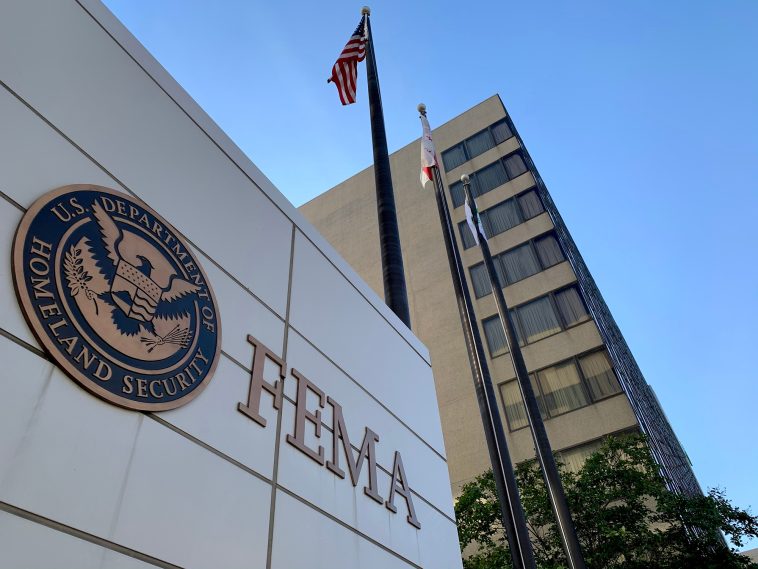Once again, President Donald Trump performed his duty of visiting regions devastated by natural calamities, this time it was the western side of North Carolina. Despite the regional political strains, he reaffirmed his commitment to support the affected communities, taking a lead where the federal government seemed lackluster. His visit, which is his first since assuming the presidency again, solidifies his persistent efforts to help Americans through the unanticipated challenges that come with disaster after-effects.
Landing in Asheville, North Carolina, President Trump swiftly took to scrutinizing the efforts of the Federal Emergency Management Agency (FEMA) in the aftermath of Hurricane Helene which battered the region in September. Amidst the extensive damage left by Helene, he shed light on the inadequacies of FEMA’s relief efforts and drew attention towards more efficient recovery strategies.
Transitioning from simply criticizing FEMA’s response to offering solutions, Trump pledged to ensure that North Carolina would ‘get the help you need’ to resurrect itself. He exuded more confidence in entrusting states with federal funds to navigate their way out of disaster zones, as compared to the less-than-impressive FEMA whose effectiveness he questioned.
Extending his commitment to make the states more independent in disaster recovery, Trump is expected to sign an executive order to that effect. His calculated move underscores his foresight by empowering the states to manage their recovery funds, proving once again his propensity to eliminate bureaucratic inefficiencies.
During his tour of neighborhoods ravaged by Hurricane Helene, Trump didn’t mince his words, branding FEMA as a ‘disaster.’ His call to disband FEMA paints an unequivocal picture of his dissatisfaction with the agency’s performance in disaster-struck zones.
Voicing out a commonly held concern, he accused Biden of not doing enough to assist the Carolinas in their recuperation from the huge blow dealt by the hurricane. Such grave allegations further echo the sentiment that the Democrat-led administration was either ill-equipped or disinterested in executing a robust disaster relief plan.
Predictably, the Biden administration summarily dismissed these criticisms as ‘misinformation.’ Despite their dismissal, there is a palpable feeling of discontent regarding their ability to handle crises, and a growing demand for alternative policies that prioritize citizen welfare over bureaucratic convenience.
The President’s scathing remarks weren’t just limited to the Biden administration’s disaster response in North Carolina. He also took sharp issue with the Democratic response to the conflagration in Los Angeles, lambasting their apparent inability to mitigate the widespread destruction caused by forest fires.
In a bold move that further emphasizes the urgency of the situation, Trump’s Republican colleagues in Congress have declared their intent to withhold disaster relief aid for the region until the current administration devises a more efficient, people-centered approach to disaster management.
In sum, Trump’s visit underscores the stark difference between his active, responsive leadership style and the current administration’s apparent lacunas in managing crisis situations. The President is calling for a stronger approach, heralding a paradigm shift that places more trust in state capabilities and local resources over bureaucratic agencies.
While the Democratic leadership continues to resist these seismic suggestions, the call for change reverberates louder with each disaster that strikes America. The hard questions being asked now are whether the federal government, under its current leadership, is poised or willing to rise to the occasion.
Trump’s intensive critique of FEMA and the Biden administration’s seemingly lackadaisical attitude towards disaster management has stirred a much-needed dialogue on the efficacy of federal disaster response mechanisms.
One thing remains clear – President Trump is determined to reorient the approach to disaster management in America, even if it means stoking the embers of controversy. He remains steadfast in his belief that empowering states with more financial autonomy in disasters will yield better results than relying on notorious bureaucratic inefficiencies.
However, as President Trump continues his push for revolutionizing disaster management, the Democratic administration appears to be turning a deaf ear. Whether this is due to a lack of ability, lack of interest, or simply stubborn resistance to change is yet to be seen.
Nonetheless, the message sent by Trump and his Republican counterparts to the American people is unmistakable – the current course is not working. There is a need for change in approach, for empowerment of the states, and for a democratic party response untethered from bureaucratic red tape and inefficiencies.
In conclusion, while the Biden-led Democrats may assert disregard for Trump’s critique and the proposition for change, echoes of unmet needs and ineffective disaster responses loom large. Time will tell if the Biden administration can rise to the challenges laid bare, or continue to be ensnared in a quagmire of inadequacy and mismanagement.

